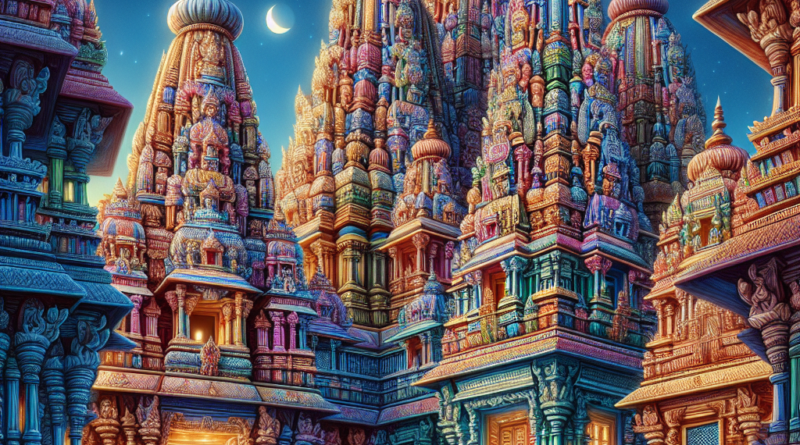Sacred Sanctuaries: Exploring the Beauty of Hindu Temples
Title: The Spiritual and Cultural Significance of Hindu Temples in Indian Society
Introduction:
Hindu temples hold a special place in the hearts and minds of millions of devotees worldwide. These sacred structures are more than just places of worship; they serve as hubs of spiritual energy, cultural heritage, and community bonding. In this article, we will explore the historical context and contemporary relevance of Hindu temples in Indian society, shedding light on their profound significance.
Historical Context:
The tradition of temple worship in Hinduism dates back thousands of years, with the earliest known temples being excavated from the Indus Valley civilization. Over the centuries, Hindu temples have evolved in their architectural styles, symbolism, and rituals, reflecting the diverse regional and cultural influences across the Indian subcontinent.
Temples in ancient India were not only centers of religious activities but also served as hubs of education, art, music, dance, and social gatherings. They were patronized by kings, nobles, and wealthy merchants who contributed to their construction and maintenance as acts of piety and devotion.
The temple architecture in India is a testament to the rich artistic and engineering skills of the craftsmen and artisans of yore. Intricate carvings, towering gopurams (ornate entrance towers), majestic vimanas (roof structures), and elaborate mandapas (pillared halls) adorn these temples, symbolizing the cosmic order and the divinity of the deities enshrined within.
Cultural Significance:
Hindu temples play a crucial role in preserving and promoting Indian culture and heritage. They are repositories of ancient scriptures, myths, legends, and artistic traditions that have been passed down through generations. The temple rituals, festivals, and ceremonies provide a glimpse into the vibrant tapestry of Hindu customs and beliefs.
The temples serve as centers of spiritual learning and practice, offering devotees a sanctuary for meditation, prayer, and reflection. They are believed to be the abodes of the divine, where the gods and goddesses reside and bestow their blessings upon the faithful.
The temple complex is not just a physical space but a microcosm of the universe, with its various sections representing different aspects of creation and existence. From the sanctum sanctorum housing the main deity to the outer precincts dedicated to subsidiary deities, each part of the temple symbolizes the interconnectedness of all beings and the cosmic harmony.
Contemporary Relevance:
In today’s fast-paced world, Hindu temples continue to hold immense relevance for believers seeking solace, guidance, and spiritual nourishment. Despite the challenges posed by modernity, globalization, and urbanization, temples remain vital centers of community life, social cohesion, and cultural identity.
Devotees visit temples not only to seek divine blessings but also to participate in religious rituals, festivals, and charitable activities that foster a sense of belonging and camaraderie. Temples serve as venues for cultural performances, lectures, workshops, and educational programs that promote the rich heritage of India.
Moreover, temples have adapted to the digital age by embracing technology to reach out to a wider audience through live streaming of rituals, online puja bookings, virtual tours, and social media engagement. This fusion of tradition and innovation ensures that the timeless wisdom and values enshrined in Hindu temples resonate with people of all ages and backgrounds.
Conclusion:
In conclusion, Hindu temples stand as living monuments to the spiritual and cultural heritage of India, embodying the timeless wisdom, artistic splendor, and communal ethos of the Hindu civilization. As beacons of light and hope, temples continue to inspire and uplift millions of devotees across the globe, reminding them of their rich legacy and profound connection to the divine. May these sacred sanctuaries continue to thrive and flourish, serving as pillars of strength and unity for generations to come.

